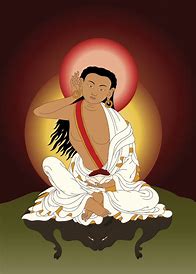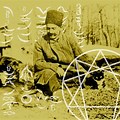Three Scientology defectors sue church leader David Miscavige
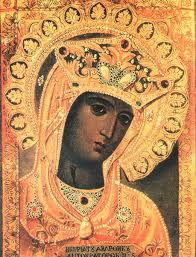










Three Scientology defectors sue church leader David Miscavige
hree Scientology defectors are suing the church's leader David Miscavige claiming they were trafficked as children and forced into 'dangerous' labor aboard the controversial Sea Org ships.
Gawain Baxter, his wife Laura and Valeska Paris all sued the church in Tampa this week, claiming they were forced into the work on the ships from as young as the age of six.
They said they had to sign contracts promising 'one billion years' of service to the church and worked for 'low and even no pay'.
Gawain Baxter said his parents put him in a Sea Org nursery when he was two months old.
At the age of six, he was forced to sign the one billion year contract, and went to live in a Cadet Org dormitory with around 100 other children.
'Children over six years old are considered to be and are frequently told that they are adults and that they should act and expect to be treated as adults.
'They are now even called children; rather they must be referred to as "Cadets"' the lawsuit says.
They claimed that the church organizers and Sea Org supervisors only allowed them to see their parents once a week, but that visits could be canceled at a moment's notice if they deemed the child to be in trouble.
'From the ages of six to fourteen, Gawain was not permitted to attend any accredited public or private school. Instead, schoolwork consisted of two to three hours per day of basic reading, writing, and math in a classroom of thirty other children, under the supervision of Linda Hilton, Cadet Coordinator’s spouse.
'Beginning when Gawain was ten years old, he was required to spend one to two hours daily in Scientology indoctrination courses as well.
'The cost of each course was recorded as a debt that Gawain was told he would owe if he ever left Cadet Org or Sea Org,' the lawsuit alleges.
© Provided by Daily Mail The Sea Org 'Freewinds' ship is where Scientology children are sent as 'cadets.' They are forced to pledge 'one billion years of service'
On top of his 'schooling', he says he was required to perform 'five to ten hours a day' of unpaid labor.
When he was 14, he says he was moved into a different phase of the program where he was forced to perform up to 12 hours a day of unpaid labor, renovating properties and cleaning them.
'Gawain was sleep-deprived, given inadequate time to eat, and verbally abused by his adult supervisors,' the trio's attorney said.
© Provided by Daily Mail The lawsuit claims Scientology leader David Miscavige is aware of the child abuse and forced labor and facilitates it with donations to the church
That phase lasted three months and ended with him joining the Sea Org force.
Paris alleges that she was repeatedly sexually assaulted by a Sea Org supervisor.
Her duties included landscaping and caring for newborns who were born to other members.
When she was 17, her mother fled the church. She says she was punished as a result.
She claims one of her punishments was being locked in an engine room on the ship for 48 hours when the temperature inside was over 100 degrees.
She decided to leave in around 2011.
By then, she had been taken by the organization to Australia.
She claims the church confiscated her passport, leaving with her 'no identification and no money' when she eventually broke free.
She got out by purposely falling pregnant - which was banned on the ship - and says she pretended to continue with the pregnancy even after miscarrying.
'Another senior officer then screamed at Valeska, telling her she would get cancer and die if she left, and reminding her that she would have to repay all her freeloader debt.
'Valeska was aware that Sea Org members are not permitted to have children, so she purposely became pregnant and refused demands that she terminate her pregnancy.
'After six weeks, Valeska miscarried but continued to pretend to be pregnant so that she would be forced to leave Sea Org,' the lawsuit claims.
Gawain's wife Laura was also raised onboard the ships. She says she suffered similar abuse.
It is unclear when exactly they left the church, but the pair are both thought to have settled in Australia.
Scientology and Miscavige have not yet responded to the claims in the lawsuit.
Reference: Jennifer Smith, Chief Reporter For Dailymail.Com
Caste pervasive across Christian, Sikh, Buddhist and other faiths








Caste pervasive across Christian, Sikh, Buddhist and other faiths
(photo credit: FLICKR) Indian mother and child
The California State University system, America’s largest public higher education system, recently added caste, a birth-based social hierarchy system, to its anti-discrimination policy, allowing students, staff and faculty across its 23 campuses to report caste bias and discrimination.
CSU’s move has drawn a sharp response from some in the Indian diaspora: About 80 faculty members of Indian heritage, as well as the Hindu American Foundation, a Washington, D.C.-based advocacy group, have opposed the decision, claiming that it is potentially stigmatizing for persons of Hindu or Indian heritage. They have also threatened a lawsuit against CSU if this decision is not revoked.
The caste system is often conflated in Western media with Hindu religion and India alone. However, as social scientists specializing in South Asian Studies, we know that the caste system is neither exclusive to Hindu religion nor is it endemic to India.
Caste in South Asia
While the caste system originated in Hindu scriptures, it crystallized during British colonial rule and has stratified society in every South Asian religious community. In addition to India, it is present in Pakistan, Bangladesh, Nepal, Sri Lanka, the Maldives and Bhutan.
Social, economic and political status in this pernicious system is tied to traditional occupations fixed by birth. Brahmins, for example, who are assigned priestly work, are at the top, and Dalits, relegated to the bottom, are forced into occupations that are considered abject in South Asia, such as cleaning streets and toilets, or working in the tanning industry. Caste-based rules of marriage maintain these boundaries firmly.
Caste organizes social life not only among Hindus but also in Muslim, Christian, Sikh and Buddhist communities in the region. It is an intergenerational system based on birth into a caste group. Caste identities stay even generations after someone converts out of Hinduism and into any of these faiths.
Among South Asian Christians, Anglo-Indians are at the top of the hierarchy. This small community includes individuals of mixed descent from Indian and British parents. Those who converted to Christianity, even generations ago, from middle level Hindu castes come next, followed by those from Indigenous backgrounds. Those who converted to Christianity from Dalit castes are placed at the bottom.
Provided by The Jerusalem Post Pyramid of caste system in India (Credit: WIKIMEDIA)
Muslims across the region are organized with the minority Ashraf communities at the top. The Ashraf community claims noble status as the “original” Muslims in South Asia, due to their descent from Central Asian, Iranian and Arab ethnic groups. The middle in this social hierarchy is comprised of Ajlaf, considered to be “low-born” communities that converted from Hindu artisanal castes. The group at the bottom includes converts from Dalit communities who are identified with the demeaning term Arzal, which means vile or vulgar.
In the Sikh community, the powerful land-owning caste, Jat-Sikhs, are at the top, followed by converts from Hindu trading communities in the middle and converts from lower caste Hindu communities, Mazhabi Sikhs, at the bottom.
While Buddhism in India is close to being casteless, its dominant versions in Sri Lanka and Nepal have caste-based hierarchies.
Caste carries over after conversion
While many of the so-called lower caste groups converted to escape their persecution in Hinduism, their new religions did not treat them as fully equal.
South Asian Christians, Muslims, Sikhs and Buddhists with Dalit family histories continue to face prejudice from their new co-religionists. They are excluded from or experience segregation at shared places of worship and sites of burial or cremation across all these regions.
Social scientists have shown that strict caste-based rules continue to regulate social organization and everyday interactions. Inter-caste marriages are rare: In India alone, they have remained at about 5% of all marriages over the past several decades. When they take place, the couples risk violence.
While urbanization and education have normalized everyday interactions across caste groups in shared urban spaces, entertaining lower caste individuals in upper caste households is still taboo in many families. A 2014 survey found one in every four Indians to be practicing untouchability, a dehumanizing practice in which people from Dalit castes are not to be touched or allowed to come in contact with upper caste individuals. Untouchability was prohibited in India in 1950 when its egalitarian constitution came into force. However, home ownership is segregated by caste, and religion and caste discrimination is pervasive in the rental market where residential associations use flimsy procedural excuses for keeping lower caste individuals out.
Lower castes are expected to defer to the higher status of upper castes, refrain from expressing themselves in shared spaces and avoid displaying material affluence. They risk being punished by socioeconomic boycotts, which could include ostracizing the Dalits or keeping them out of employment. It may even include assault or murder. In Pakistan, anti-blasphemy laws are used as a pretext for caste violence against Dalits, many of whom have converted to Christianity.
Caste and life outcomes
Studies show that caste-based identity is a major determinant of overall success in South Asia. Upper caste individuals have better literacy and greater representation in higher education. They are wealthier and dominate private sector employment, as well as entrepreneurship.
While affirmative action programs initiated by the British and continued in independent India have made improvements in the educational levels of lower caste groups, employment opportunities for them have been limited.
Studies also demonstrate how caste identity affects nutrition and health through purchasing power and access to health services.
Most socioeconomic elites in South Asia, regardless of religion, are affiliated with upper caste groups, and the vast majority of the poor come from lower caste groups.
Caste in the diaspora
Scholars have documented similar discriminatory practices in the diaspora in the UK, Australia, Canada and the African continent.
Caste has started getting recognition as a discriminatory category, especially in the US, in recent years. A 2016 survey, “Caste in the USA”, the first formal documentation of caste discrimination within the US diaspora, found that caste discrimination was pervasive across workplaces, educational institutions, places of worship and even in romantic partnerships.
In 2020, the state of California sued Cisco Systems, a technology company in the Silicon Valley, on a complaint against caste-based discrimination. Harvard University, Colby College, UC Davis and Brandeis University have recognized caste as a protected status and have included it in their nondiscrimination policies.
These developments in the US have put the spotlight again on this centuries-old system that denies equality to large populations on the basis of an oppressive and rigid hierarchical system. It is up to the American diaspora how they commit to engage with it, as they themselves strive for equality and fairness in their new multicultural society.
Aseem Hasnain is an associate professor of sociology at Bridgewater State University and Abhilasha Srivastava,s is an assistant Professor of Economics at California State University, San Bernardino. This article is republished from The Conversation under a Creative Commons license. Read the original article.
Vatican suspends Jerusalem meeting between pope, Russian patriarch
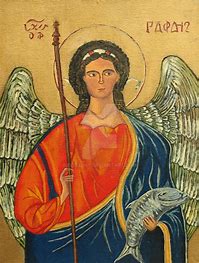








Vatican suspends Jerusalem meeting between pope, Russian patriarch
(photo credit: REUTERS/Adalberto Roque/Pool/File Photo) Pope Francis and Russian Orthodox Patriarch Kirill meet in Havana
Pope Francis has said he has dropped plans to meet in June with Russian Orthodox Patriarch Kirill, an ally of Russian President Vladimir Putin who has backed Moscow's war in Ukraine.
Francis, who has several times implicitly criticized Russia and Putin over the war, told Argentine newspaper La Nacion in an interview that he regretted that the plan had to be "suspended" because Vatican diplomats advised that such a meeting "could lend itself to much confusion at this moment."
In Moscow, the RIA news agency quoted Metropolitan Hilarion, a senior Russian Orthodox Church official, as saying the meeting was postponed because "the events of the last two months" would have created many difficulties in its preparation.
Reuters reported on April 11 that the Vatican was considering extending the pope's trip to Lebanon on June 12-13 by a day so that he could meet with Kirill on June 14 in Jerusalem.
Kirill, 75, has given his full-throated blessing for Russia's invasion of Ukraine since it began on Feb. 24, a position that has splintered the worldwide Orthodox Church and unleashed an internal rebellion that theologians and academics say is unprecedented.
Francis, 85, has used terms such as unjustified aggression and invasion in his public comments on the war, and has lamented atrocities against civilians.
Asked in the interview why he has never named Russia or Putin specifically, Francis was quoted as saying: "A pope never names a head of state, much less a country, which is superior to its head of state."
Putin, a member of the Russian Orthodox Church, has described Moscow's actions as a "special military operation" in Ukraine aimed at demilitarizing and "denazifying" the country. Moscow has denied targetting civilians
Francis has specifically rejected Russia's terminology, calling it a war that has caused "rivers of blood."
A Vatican source familiar with the planning for the Jerusalem stop said on Friday that it had been at an advanced stage, with even the location for the meeting with Kirill chosen.
It would have been only their second meeting. Their first, in Cuba in 2016, was the first between a pope and a leader of the Russian Orthodox Church since the Great Schism that split Christianity into Eastern and Western branches in 1054.
Provided by The Jerusalem Post Pope Francis leads the Good Friday Passion of the Lord service at the Vatican (Credit: REMO CASSILI/REUTERS)
Francis said earlier this month that he was considering a trip to Kyiv, telling reporters on a flight to Malta on April 2 that it was "on the table." He has been invited by Ukrainian political and religious leaders.
Asked in the Argentine interview why he has not yet made the trip, he said:
"I cannot do anything that would jeopardize higher objectives, which are an end to the war, a truce or at least a humanitarian corridor. What good would it do for the pope to go to Kyiv if the war continues the next day?"
Reference: The Jerusalem Post: By REUTERS
French nun Sister Andre, 118, claims title of world's oldest person
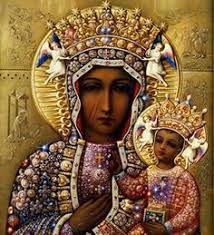








French nun Sister Andre, 118, claims title of world's oldest person
A French nun who recently celebrated her 118th birthday with her traditional port-and-chocolate cocktail is now the world's oldest known person, following the death announced Monday of a Japanese woman one year her senior.
Nicolas Tucat, AFP
Lucile Randon, known as Sister Andre, was born in southern France on February 11, 1904, when World War I was still a decade away.
She now lives at a nursing home in Toulon along the Mediterranean coast, beginning every day with breakfast and then a morning mass, though her eyes can no longer see.
"She's happy, she likes very much this attention," said the home's communications director David Tavella, adding that a short press conference would be held Tuesday morning.
"But it's just another step, because her real goal is to overtake Jeanne Calment," a French woman who was reportedly 122-years-old when she died in 1997.
This year Sister Andre got a handwritten New Year's greeting from President Emmanuel Macron, among the many letters and boxes of chocolates sent by well-wishers.
"I was always admired for my wisdom and intelligence, but now people could care less because I'm stubborn," she jokingly told an AFP in an interview for her 118th tour around the sun.
"I'm thinking of getting out of this business but they won't let me," she said.
he worked as a governess in Paris -- a period she once called the happiest time of her life -- before taking her religious vows with the Daughters of Charity.
Previously the person deemed the world's oldest by the International Database on Longevity (IDL) and Guinness World Records was Kane Tanaka, whose death in Japan on April 19 was announced Monday.
With her death, "Sister Andre indeed becomes the oldest, and by far, since the next oldest is a Polish woman who is 115," said Laurent Toussaint, a computer scientist and amateur tracker for the IDL as well as the French institute of demographic studies (INED).
Most centenarians are found in the world's so-called blue zones, where people live longer than average, such as Okinawa in Japan or on the Italian island of Sardinia.
But France, while not considered a blue zone, nonetheless has 30,000 centenarians, according to statistics institute Insee, with around 40 of them 110 or older.
Reference|: NewsWire:
Articles-Latest
- Koran burning conviction sparks fury as blasphemy law 'returns to UK'
- Robert Francis Prevost - Pope Leo XIV
- Pope Francis' death follows recent health challenges. Here's what we know about how he died.
- Easter April 2025 - international Celebrations
- The Rule of the twelve psalms -Worthy is the Lamb
- Religion in Africa Before Christianity and Islam
- 6 The Origin of Yahweh
- Dumo Di Milano
- What Did the Crow Tribe Believe In: Discover The Beliefs!
- 7 Reasons Historic Christianity Rejects the Book of Enoch
- 8 Breathtaking Mountain Monasteries Around the World
- Ethiopian Bible is oldest and most complete on earth
- Muhammad Muhammad was a prophet and founder of Islam.
- World Day of the Poor – SVP Christmas Campaign 2024
- Pope Francis to open 5 sacred portals on Christmas Eve — for a ritual that’s never been done before
- The 144,000 in Revelation
- Over 73 dead bodies 'used for meditation', 600 crocs in a pond, found in two Thai temples
- Occultism: Western Occult Tradition
- What is a Mudra
- Blood Sacrifices: Ancient Rituals of Life and Death
Articles-Most Read
- Home
- Let There Be Light
- Plants that feel and Speak
- The Singing Forest
- The Singing Forest-2
- Introduction
- Meditation
- Using Essential Oils for Spiritual Connection
- Heaven Scent
- Plants that Feel and Speak-2
- Purification
- Making the Spiritual Connection
- Anointing
- Essential Oils: The unseen Energies
- The Sanctity of Plants
- The Aroma Of Worship - Introduction
- The Aroma Of Worship-Foreward
- Methods Of Use
- Spiritual Blending
- Handling and Storage


